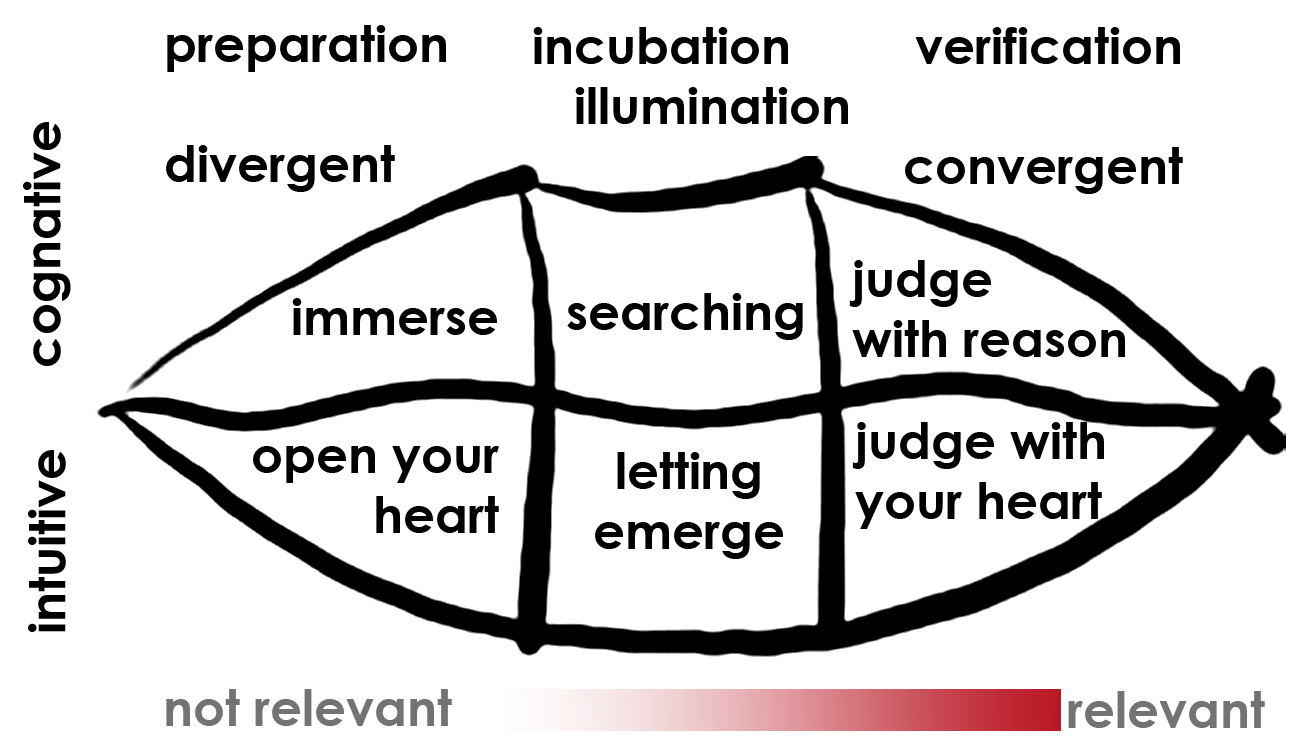Project Tree
What is Project Tree about ?
Developing a vision or starting a new project is often very exciting and uplifting, but one can easily get overwhelmed by the many aspects that are wobbly and unclear, not defined and not yet decided. There are so many ideas and questions around the vision and, oh gosh, they are all interrelated with each other -- you try to answer one question and see you cannot properly answer it before having tackled several others. The head starts to pound, the discussions go wild and after a while the joy and enthusiasm with which you started this project is covered with a thick layer of confusion and exhaustion.
The project tree is a good tool to offer innovators security and structure in this delicate moment of transition from a blurry yet glittering vision to a tangible project without losing its shine.
The project tree is a visualisation aid that:
-helps you orientate in complexity,
-provides a way to clear your mind of unsolved questions and floating ideas,
-and allows your thoughts to jump between very fundamental questions of meaning and purpose in one moment and nitty-gritty details about a specific action in the next without losing track.







Audience
Is participant experience relevant for Project Tree ?


Requirements
Run Through
Print out the project tree on A1 paper.
If your group works on individual projects, provide one tree template to each participant and make sure everyone has enough space to work on them.
If you work on a common project with a group, pin the tree template to a moderation wall.
If you work on a big and complex project, you might want to draw a bigger tree on bigger paper to have enough space for lots of post-its.
Define a focus topic
Collect ideas and questions ~ 10 minutes
Match the ideas with the 5 levels of the tree
Climb up and down the tree
Online use of the Project Tree

ERASMUS +
Co-funded by the Erasmus+ Program of the European Union. Find more information about the program and its goals here: https://erasmus-plus.ec.europa.eu/.
Views and opinions expressed are however those of the author(s) only and do not necessarily reflect those of the European Union or the European Education and Culture Executive Agency (EACEA). Neither the European Union nor EACEA can be held responsible for them.

Creative Commons license:
CC-BY-SA You are free to distribute, remix, adapt, and build upon the material in any medium or format, even for commercial purposes with mention of the source: Transformation Hosts International, www. hostingtransformation.eu. If you remix, adapt, or build upon the material, you must license the modified material under identical terms.




